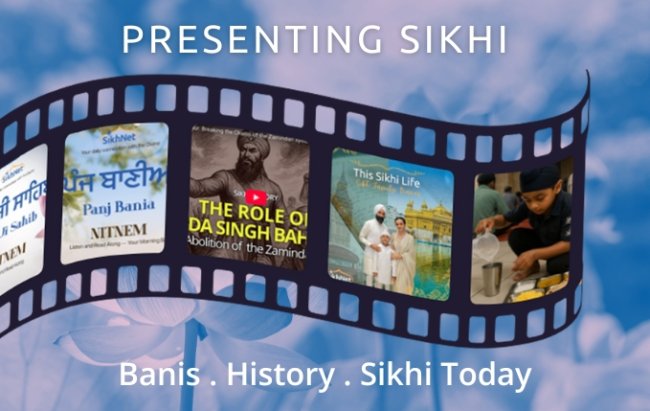Valarie Kaur was inspired by violence against Sikhs in the wake of 9/11
November 4, 2012: Storytelling plus advocacy equals social change. According to Valarie Kaur, this is an equation that will reshape the world. On Friday, Kaur, who is director of both the Yale Visual Law Project and Groundswell — a nonprofit organization that combines storytelling and advocacy to mobilize communities into social action — spoke with over 40 students and faculty in Huntsman Hall. Her talk kicked off the United Minority Council’s first ever Unity Month and concluded a remembrance series on campus in memorial of the Oak Creek, Wis., Sikh temple shooting in August. As part of that series, three on-campus screenings of “Divided We Fall,” Kaur’s documentary that detailed through her eyes the trials of Sikh communities across America in the wake of 9/11, occurred this fall.
Storytelling
The event, entitled “A Conversation with Valarie Kaur,” began with Kaur asking everyone in the room to give their name and share why exactly they came to hear her speak.
For some, the inspiration came from watching her documentary. Others wanted to talk about issues of violence against Sikhs, specifically the Oak Creek shooting. A few mentioned gun violence. Once everyone had finished sharing, Kaur began to tell her own story.
“I was 20 years old when Sept. 11 happened,” she began. “I was crumpled on the floor of my parents’ bedroom, watching the towers fall over and over again between images of our nation’s new enemy, a turbaned and bearded Osama Bin Laden … Even though we were 3,000 miles away from it [in California], the horror of the towers falling, the magnitude of the loss of life, but also this double fear of victimization, of attacks against Sikh and Muslim Americans, people who suddenly fit the profile of our nation’s new enemy, filled me.”
Four days later, her prophesized fear was fulfilled — Balbir Singh Sodhi was murdered in Mesa, Ariz., becoming the first post-9/11 Sikh victim.
“[He] was someone my family knew, so it was as if an uncle had been murdered,” Kaur said. “In that moment, I ran to my bedroom, locked my door and hid for days.” She sat inside and read.
While reading her last book, she heard the voice of her grandpa telling her, “Nam Dan Ishnan,” which her grandpa interpreted as, “in order to realize yourself, in order to realize the divine, you must act here and now without fear.”
She was seized by the idea that the stories of men, women and children from all walks of life that were caught up in the violence, like that of Balbir Singh Sodhi, must be told.
From that notion grew the idea of her film, “Divided We Fall.”
Advocacy
For Kaur, her film was powerful not because of the awards it won but because “college campuses were hungry for new ways to talk about 9/11.”
Although the film won more than a dozen international awards, Kaur said a room full of people listening to her story is “so incredibly inspiring.”
During her presentation, Kaur not only stressed the importance of storytelling, but also of the strategic importance of stories.
 “Storytelling alone is not enough,” she said. “We need ways to lift up those stories strategically, to challenge institutions and structures of power that allow those injustices to continue. Storytelling wielded strategically in the form of advocacy can produce lasting social change.”
“Storytelling alone is not enough,” she said. “We need ways to lift up those stories strategically, to challenge institutions and structures of power that allow those injustices to continue. Storytelling wielded strategically in the form of advocacy can produce lasting social change.”
That was one of her motivations for becoming an attorney. In 2004, Kaur was arrested for disorderly conduct as she videotaped the protest against the Republican National Convention in New York City. While sitting in the jail cell, she realized she needed to be able to fight back. To do that, she needed a law degree.
Now, as director of both the Yale Visual Law Project and Groundswell, she engages in advocacy for social change through the power of storytelling every day.
Social Change
On August 5, 2012 a gunman walked into a Sikh house of worship in Oak Creek, Wis. and killed six members of the community.
“The calls I got from my friends in the Sikh community [after the shooting] were saying, ‘Look, nothing has changed. Eleven years later, and we are still targets; we are still rendered less than American in the eyes of our neighbors.’”
But they were wrong, Kaur said. Something had changed.
After the Oak Creek shooting, “thousands of people across the nation were reaching out to one another to express an outpouring of love and support,” she said. “This did not happen 11 years ago … In the years since 9/11, advocates built infrastructures that hadn’t existed before. [They] built civil rights organizations and interfaith networks.”
Less than two months after the tragedy, Harpreet Singh Saini, the son of a victim in the Oak Creek shooting, testified before the U.S. Senate. He spoke beyond the Oak Creek tragedy, calling attention to the prevalent abuse of Sikh men and women that happen every day, ranging from verbal abuses to outright violence.
He proposed governmental reforms, such as having the FBI specifically track anti-Sikh crimes. More than 80 organizations stood behind him in support.
It is this type of social change that Kaur advocated for in her presentation: the realization that we are all one people and that we must stand strong together. Kaur said the shooting “wasn’t just a Sikh tragedy, it was an American tragedy.”
For Wharton senior Angadraj Singh, vice president of the Penn Sikh Organization, it was this type of thinking that Kaur’s talk inspired.
“What I really liked about [Kaur’s presentation] was how she applied it to how hate can be combatted, in her eyes, through videography and social justice,” he said. He left the event with the fact that people acknowledge that hate has no race.
For Elsy Compres, a College senior and political chair of the United Minorities Council, this conversation was exactly what she needed. “All this week, I was looking for inspiration and I think I just found it in [Valarie Kaur].”
This article has been updated to reflect the proper transliteration of the Punjabi phrase, “Nam Dan Ishnan.”

